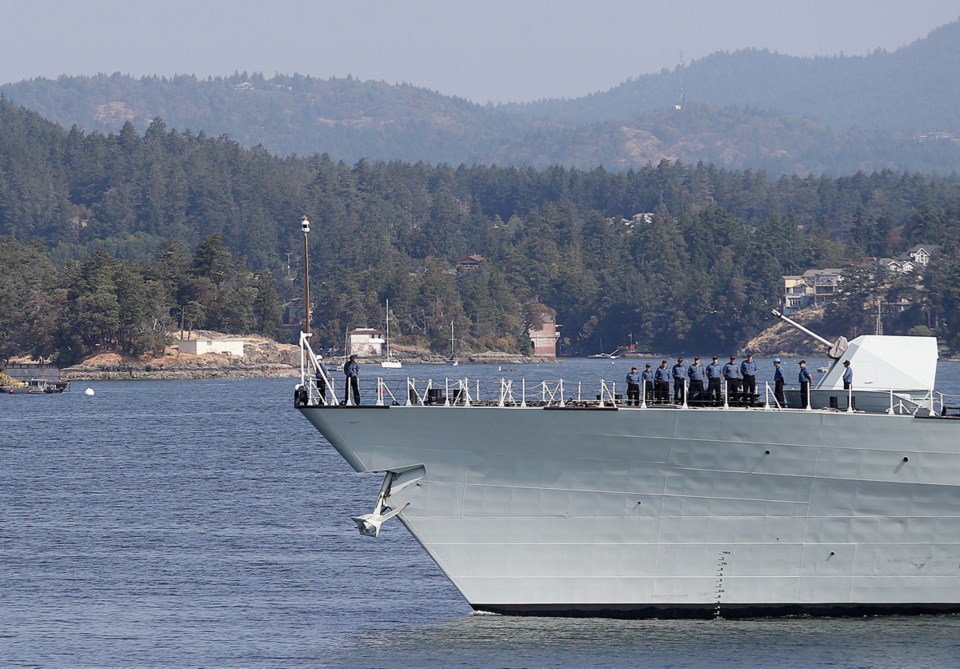HMCS Calgary departed CFB Esquimalt Monday beginning a five-month mission re-affirming Canada’s commitment to Asia Pacific nations in the wake of new diplomatic and economic initiatives.
Dubbed Operation Projection, the deployment will see the frigate, with its crew of about 230, taking part in exercises with navies from other countries including Japan, South Korea, New Zealand and Australia. HMCS Calgary will also make goodwill visits.
For example, Capt. (N) Steve Jorgensen, deputy commander of Canadian Fleet Pacific, said the federal government has arranged for the ship to visit Danang, Vietnam.
Jorgensen said the visit is a part of the navy’s mission to demonstrate Canada’s commitment to friendly relations in the area.
“The Danang visit was specifically asked for by the Government of Canada to strengthen our ties,” he said.
In January, negotiations among 11 Pacific counties concluded on the Comprehensive and Progressive Agreement for Trans Pacific Partnership trade agreement. Taking part are Australia, Brunei, Canada, Chile, Japan, Malaysia, Mexico, New Zealand, Peru, Singapore and Vietnam.
“With agreements back and forth, the amount of trade that goes through the Pacific region, our government has stepped up to try and increase our presence in the area,” said Jorgensen. “It really depends on the governments of the day and the politics of the day.”
Jorgensen said in years prior to 2016, while frigates were being rebuilt, Canada’s naval presence in the Asia Pacific diminished. But with HMCS Calgary’s refit completed, the ship now joins in re-establishing that presence.
He said at-sea exercises between HMCS Calgary and ships from navies of the Asia Pacific will lead to familiarity with each other.
This familiarity becomes essential whenever navies are called upon to work together, for example, in maintaining the free movement of trade across the oceans.
“Should there ever be anything to jeopardize that free trade we would already have been working with our partners,” said Jorgensen.
“It’s all about establishing that trust and those relationships with other navies and other countries,” he said.
Other notable recent ventures into the Asia Pacific include the five-month deployment of HMCS Chicoutimi, one of Canada’s Victoria-class submarines, which returned to CFB Esquimalt in March.
The deployment was a record length for a Canadian sub, 197 days. Chicoutimi was also the first Canadian submarine in over 50 years to visit a Japanese port.
HMCS Vancouver spent a notable deployment in the Asia Pacific in 2016.
On the way back, HMCS Vancouver answered a call for assistance from New Zealand emergency authorities responding to an earthquake in their country.
In New Zealand, HMCS Vancouver’s helicopter ferried supplies and emergency workers, including some of the ship’s own sailors.



